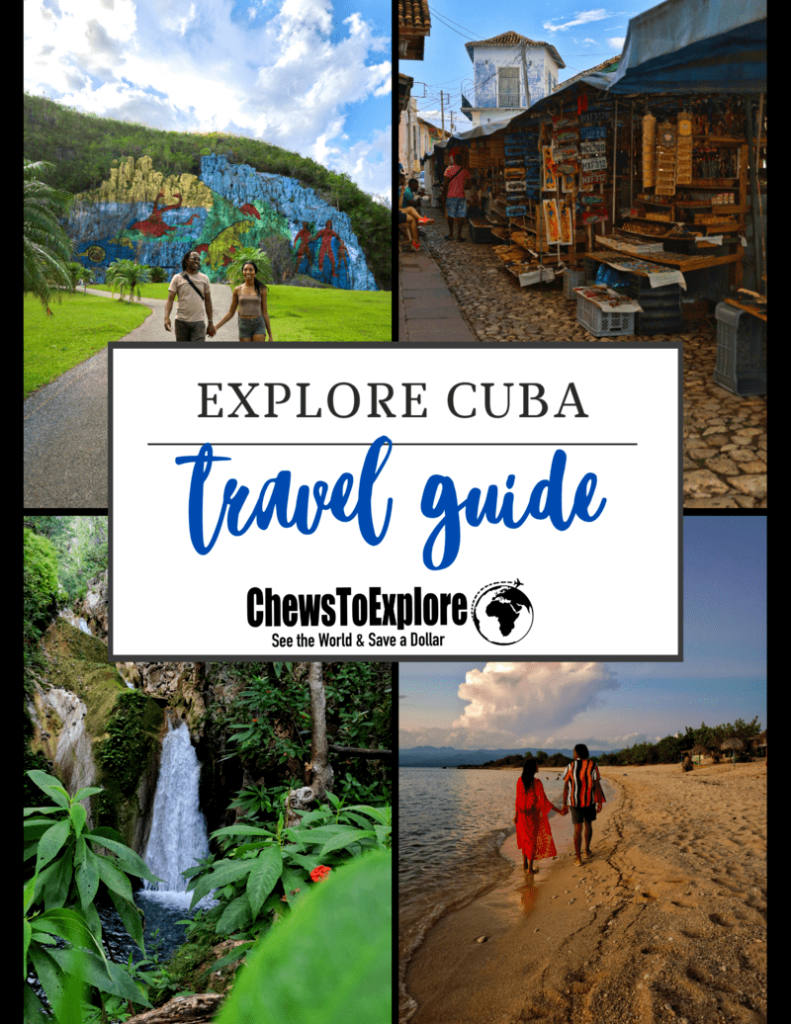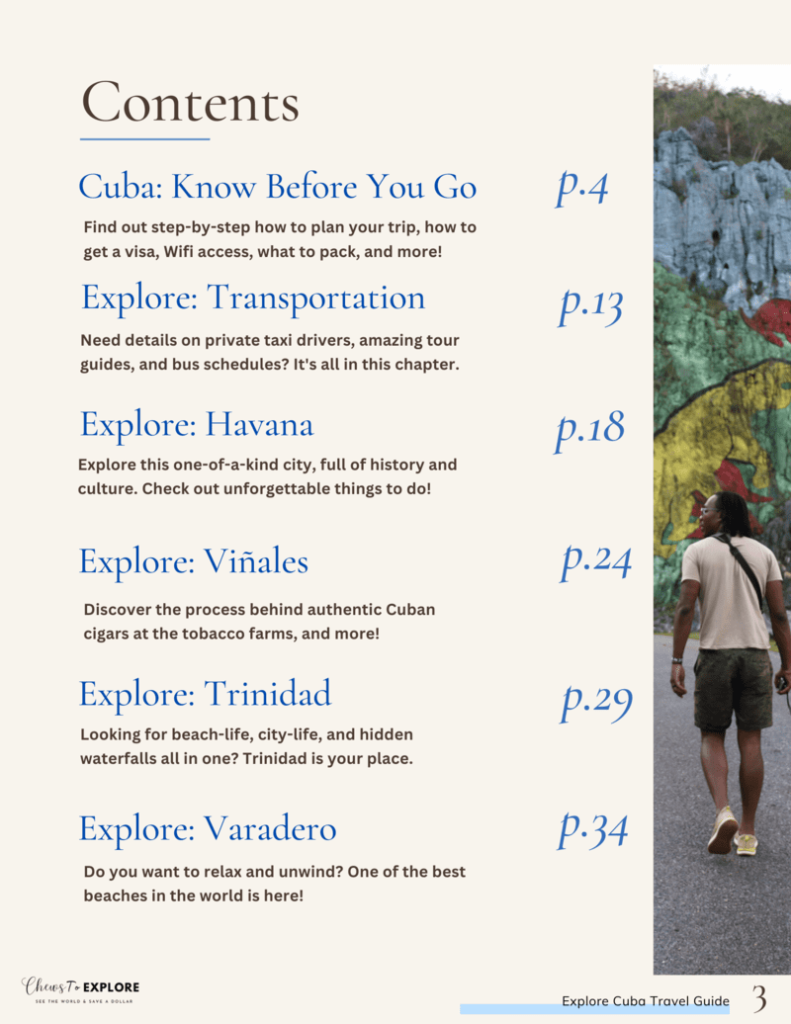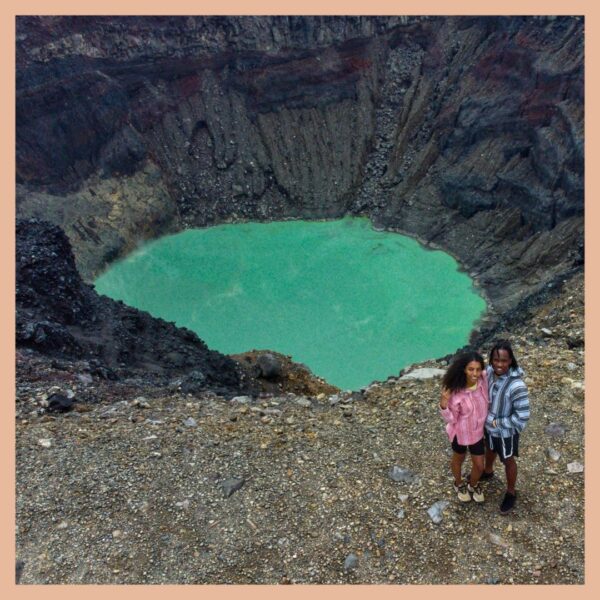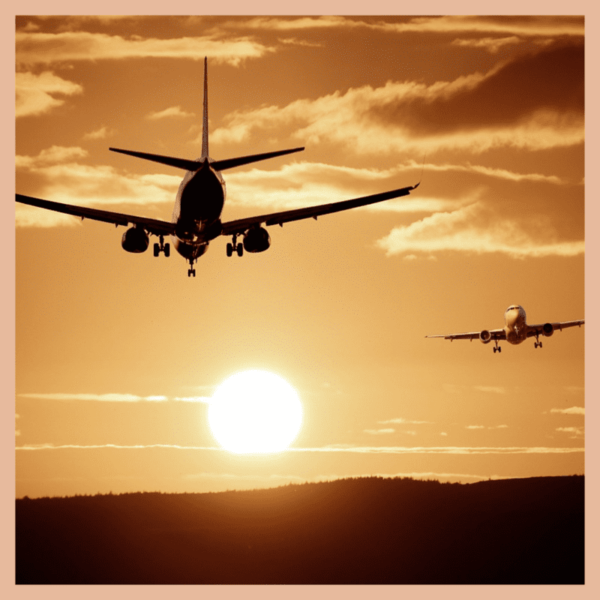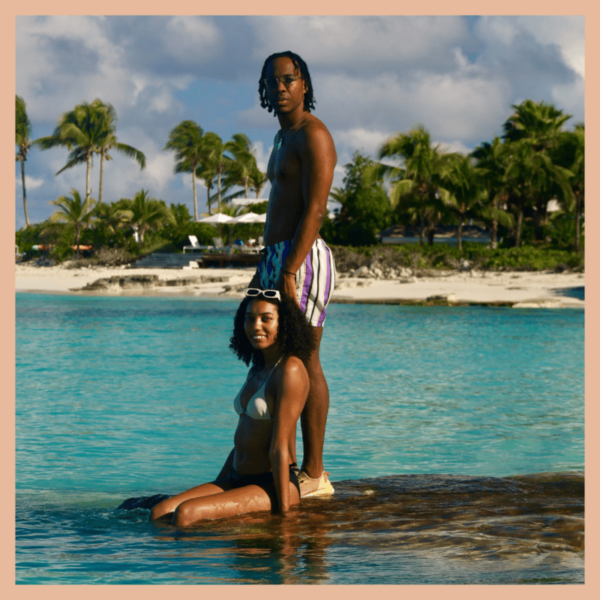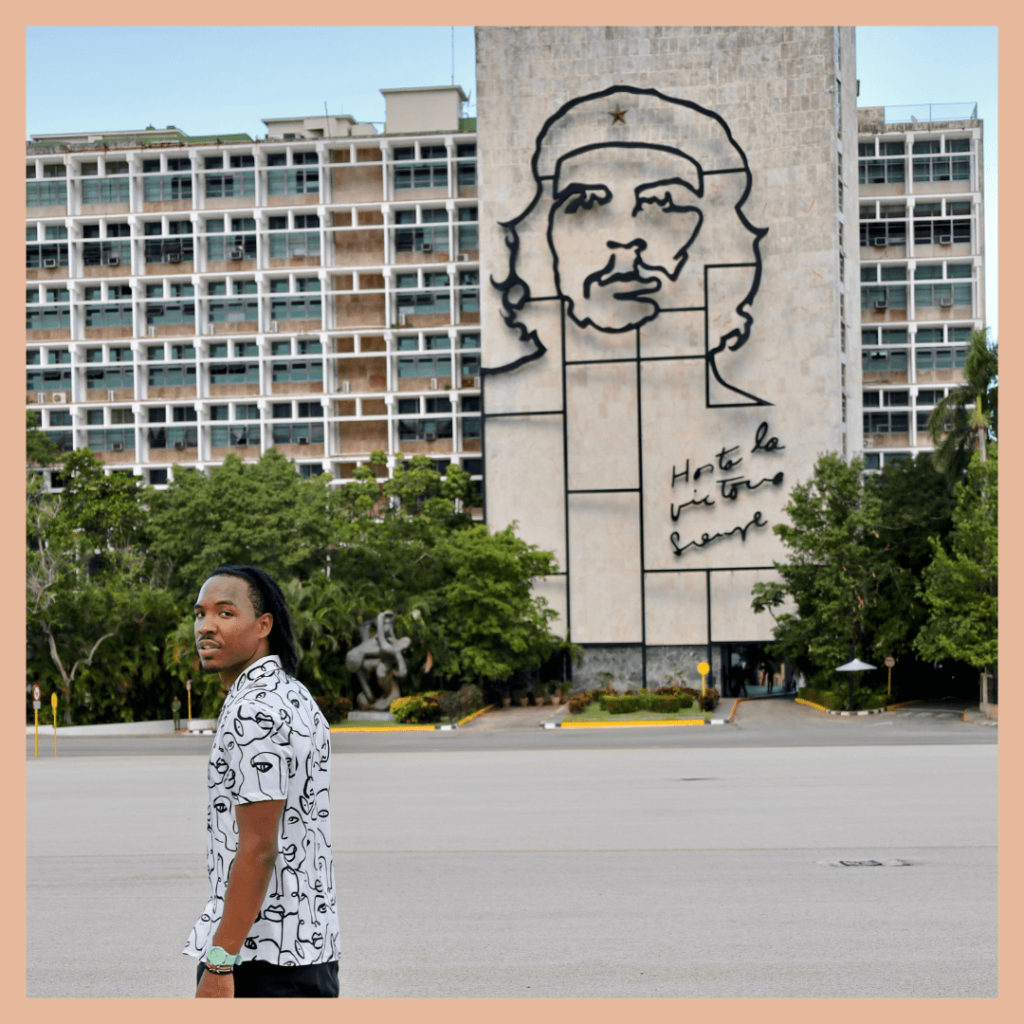
Have you been considering a trip to Cuba? I have you covered with the best way to spend 5 days in Cuba.
Disclosure: This post may contain affiliate links, which means we’ll receive a commission if you purchase through our links, at no extra cost to you. Please read full disclosure for more information.
Cuba, the largest island in the Caribbean, sits just 90 miles from the United States.
Positioned between the Bahamas and Jamaica, it’s not your typical Caribbean escape – it’s a deep dive into a unique culture.
Get ready to step outside of your comfort zone to truly experience the heart and soul of this island, where every corner tells a story and every moment is a chance to learn and connect.
Tourism plays a significant role in Cuba’s economy, turning your visit into a means of supporting local communities.
The Cuban people, known for their kindness and resilience, welcome you to explore the diverse landscapes, from lively cities to tranquil beaches and picturesque valleys.
And while we’ll certainly dive into the classic Cuban cigars, mojitos, and daiquiris, this article will uncover a wealth of experiences beyond the iconic favorites.
I traveled to Cuba last November, tracing the history of Havana, wandering through the vibrant streets of Trinidad, and discovering the natural wonders of Vinales.
With this firsthand experience, I’m sharing practical tips and insights for those planning a 5 day trip to Cuba.
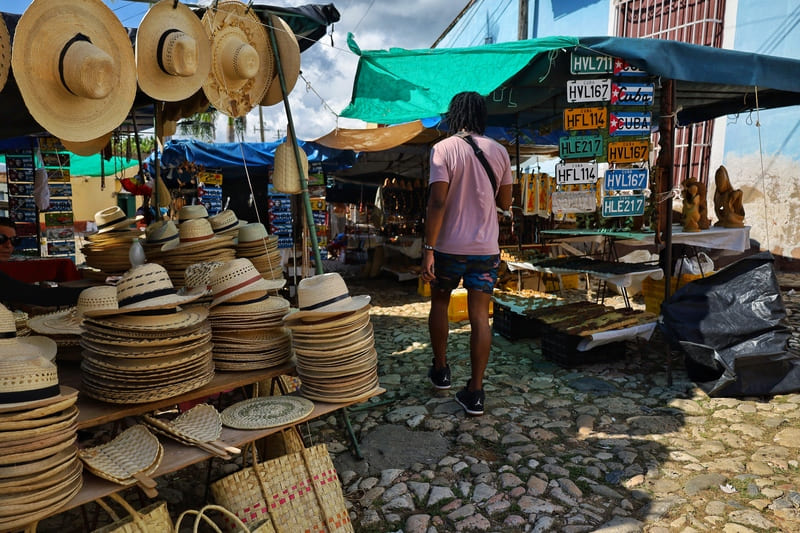
If you’re looking for genuine recommendations and guidance to maximize your trip, I’m here to help you navigate this culturally rich destination.
Keep reading to see exactly how you can travel through Cuba in 5 days!
Want to save time & money planning the perfect Cuba trip? >> Download the Explore Cuba Travel Guide
How Do You Get to Cuba from the US?
Getting to Cuba from the United States as an American is a bit different than other Caribbean destinations – it’s the only one that asks for a visa.
If you’re an American, you’ll need a Cuban tourist card, and you can get one at the airport or conveniently order it online in advance through Easy Tourist Card.
Remember, if you’re a U.S. citizen, they won’t let you board your flight to Cuba without this card.
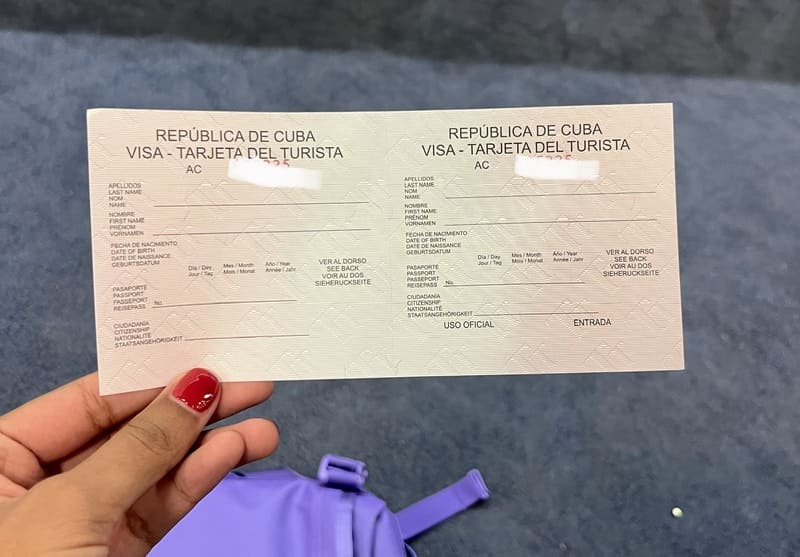
Major U.S. airlines offer flights to Cuban cities. We opted for American Airlines and flew into Havana.
Keep in mind that health insurance coverage in the area is a must for anyone heading to Cuba.
American Airlines included the necessary health insurance as part of our ticket costs.
Be sure to double-check the fare, taxes, and fees section when purchasing your flight for health insurance details.
If you’re uncertain about whether insurance is included, contact the airline directly for clarification and guidance on the next steps.
We also had to complete the required health screening form in advance of our flight, as well.
You may also need to show this health form upon landing in Cuba.
It’s a good idea to bring screenshots of all your important documentation since you may not have phone service as soon as you arrive in Cuba.
For a detailed, step-by-step guide on entering Cuba as an American and handling all the necessary steps, check out our comprehensive article that covers all the details.
RELATED ARTICLE: Ultimate Weekend in El Salvador Itinerary
RELATED ARTICLE: Best Itinerary for Mexico City
DAY 1: A Day in Havana
In this itinerary, I’ll take you through our experiences in Cuba and provide insights into what you can explore and enjoy during your trip.
Arrival in Havana
Arriving in Havana marks the beginning of your Cuban adventure.
As your plane touches down at José Martí International Airport, the first step is navigating through Cuban customs.
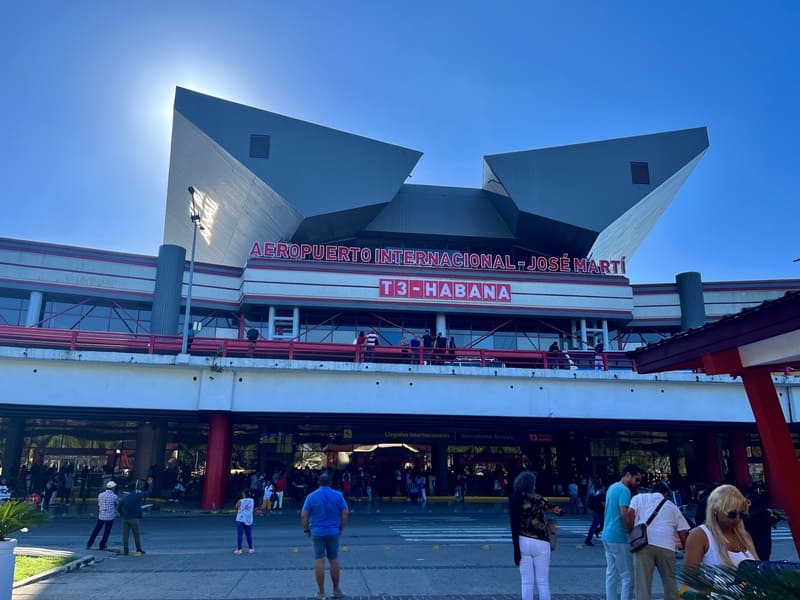
While still at the airport, you should exchange a portion of your currency for Cuban pesos.
This initial exchange will be useful to purchase a Wifi card, which is important to have if you plan to stay connected during your travels.
Upon landing in Cuba, phone service and Wifi will not be readily available.
The Wifi card can be bought with cash at the airport.

In order to use your Wifi card, you have to find a designated Wifi area.
If this sounds any bit confusing, we give you the full rundown on exactly where to get a Wifi card and how to use the Wifi card inside our “Explore Cuba Travel Guide.”
Given restrictions on car rentals for Americans in Cuba, we found shared taxis, known as colectivos, to be the most convenient mode of transportation.
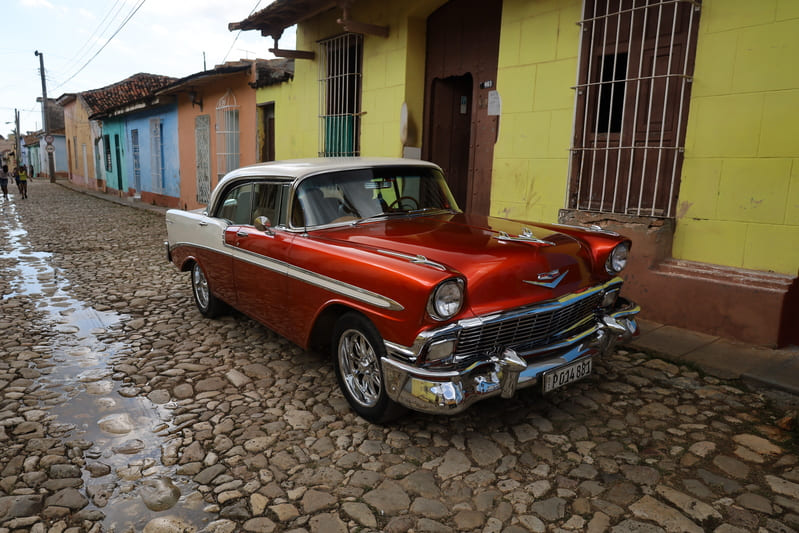
In our Explore Cuba Travel Guide, we provide our trusted colectivo driver recommendations and bus options to facilitate seamless transportation from the airport to your accommodation and beyond.
RELATED ARTICLE: Is Spirit Safe to Fly?
RELATED ARTICLE: Ultimate International Trip Packing List
Havana Casa Particular
Once you leave the airport, you’ll be checking into your “casa particular.”
This accommodation involves staying in the private homes of local Cubans.
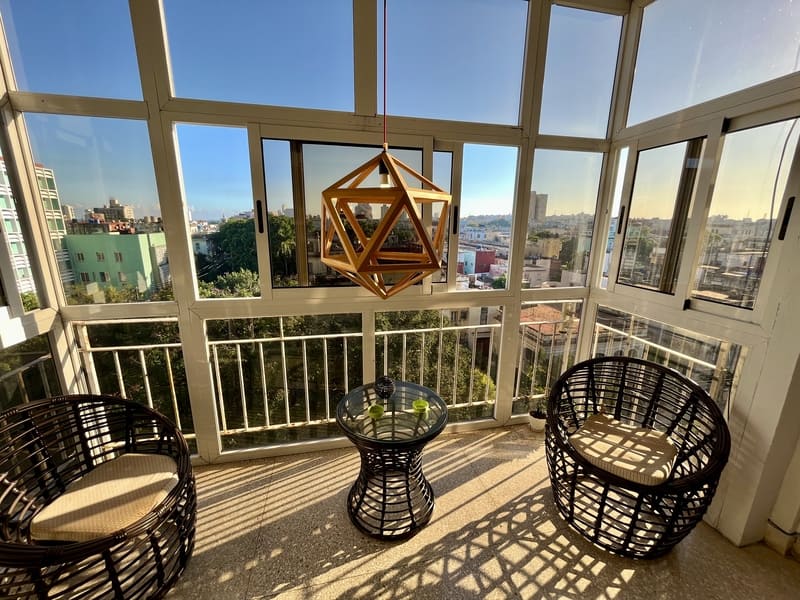
Whether you choose a separate rental or a shared space in their home, staying in a “casa particular” is a requirement for American visitors under the “Support for the Cuban People” visa category.
When you meet your casa particular host, you should ask about currency exchange, as they might offer you a more favorable rate.
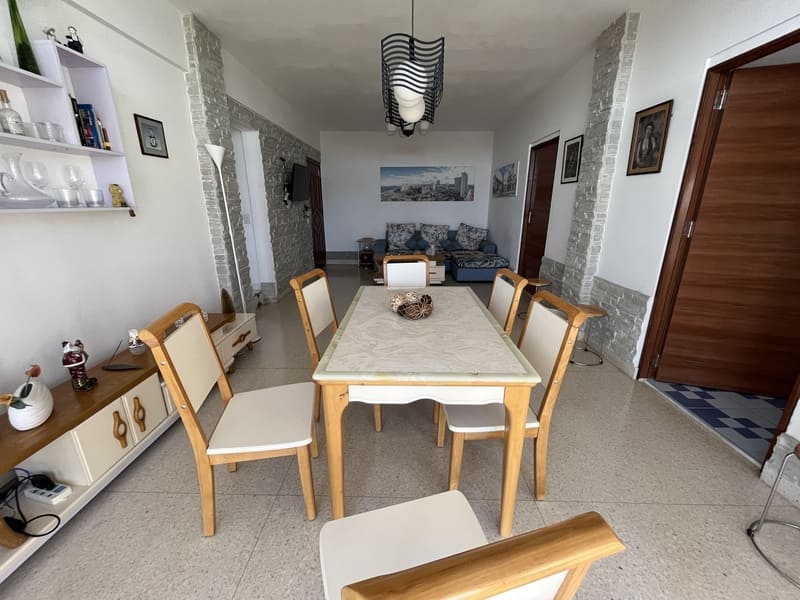
However, be aware that, during our visit, many places preferred USD over the local currency, and in some instances, they didn’t accept their own currency.
For this reason, it’s not advisable to exchange a large amount of your cash, and it’s a good idea to discuss the preferred currency with your host beforehand.
Keep in mind, that American credit cards and debit cards do not work in Cuba, so cash will be king.
Now that you’ve gotten a chance to settle into your casa particular, get ready to experience the authenticity of Havana, the largest city in Cuba.
Havana welcomes you with classic cars, weathered buildings, lively streets, and a unique blend of history and culture.
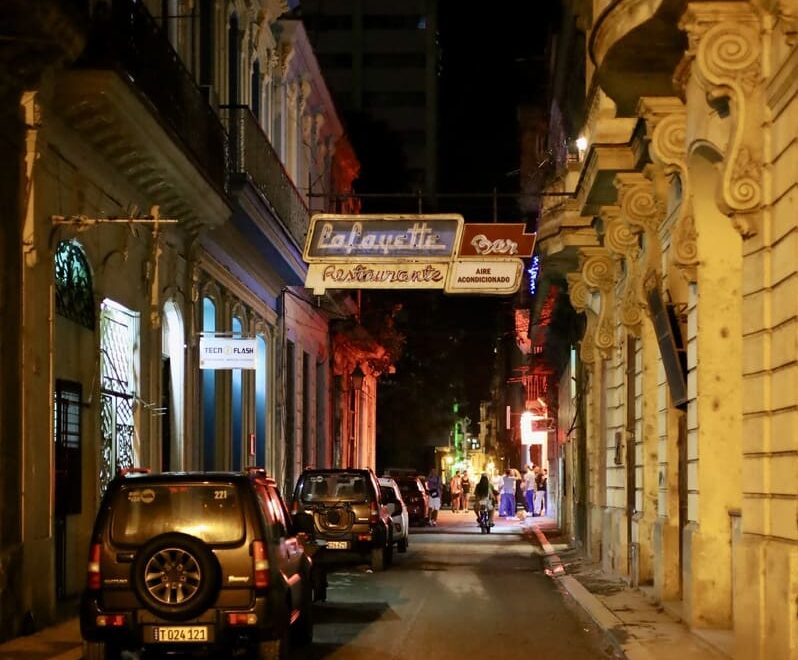
RELATED ARTICLE: Step-By-Step on How to Get to Machu Picchu Without Hiking
RELATED ARTICLE: Best Way to Redeem Credit Card Points
Revolution Square (Plaza de la Revolucion)
As you explore Revolution Square, you’re bound to see the Ministry of the Interior building and Communications building, characterized by massive steel murals of revolutionary leaders (ie. Che Guevara) on their facades.
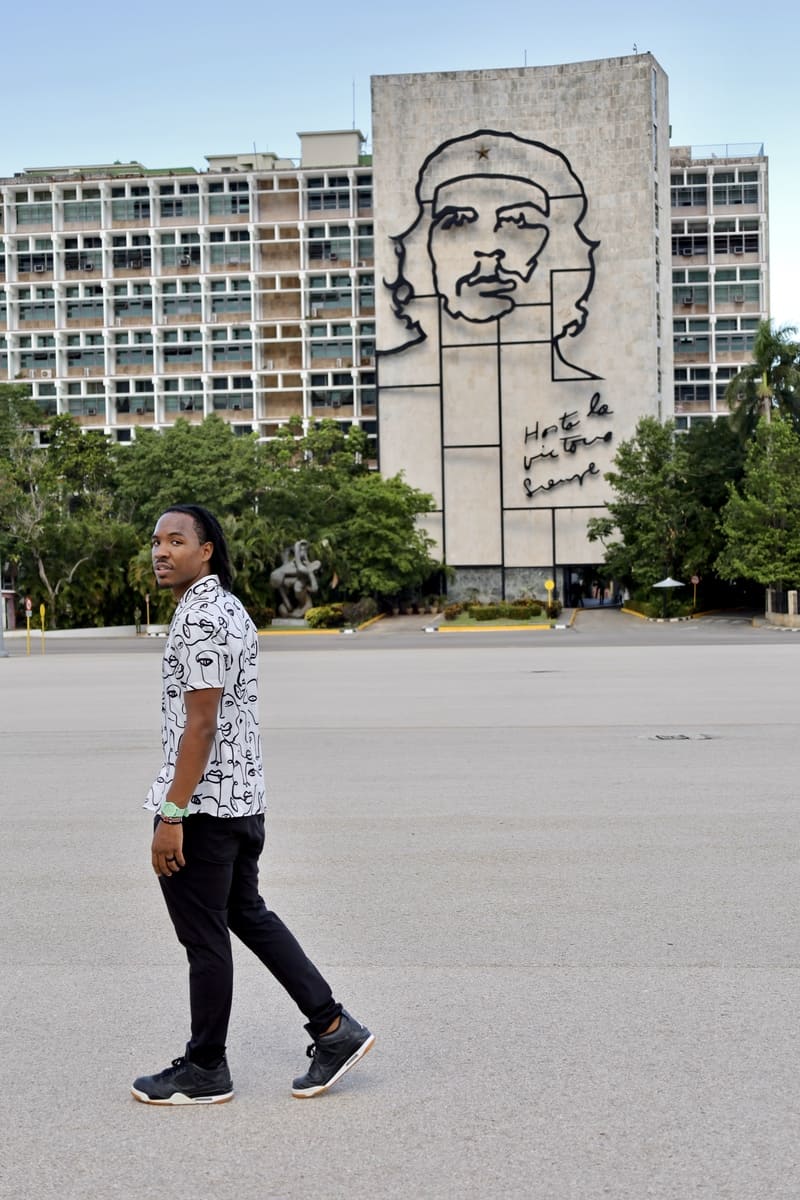
These iconic structures not only contribute to the square’s historic and political ambiance but also serve as powerful symbols of Cuba’s revolutionary spirit.
As you walk through the streets surrounding Revolution Square, you’ll likely come across charming local restaurants, offering a small taste of Cuban cuisine.
It’s essential to manage your expectations, as some restaurants may not have every item listed on their menus.
Everything is rationed in Cuba, so be mindful of that.
Engage with the friendly staff and ask about available food items so you can be sure of your meal options.
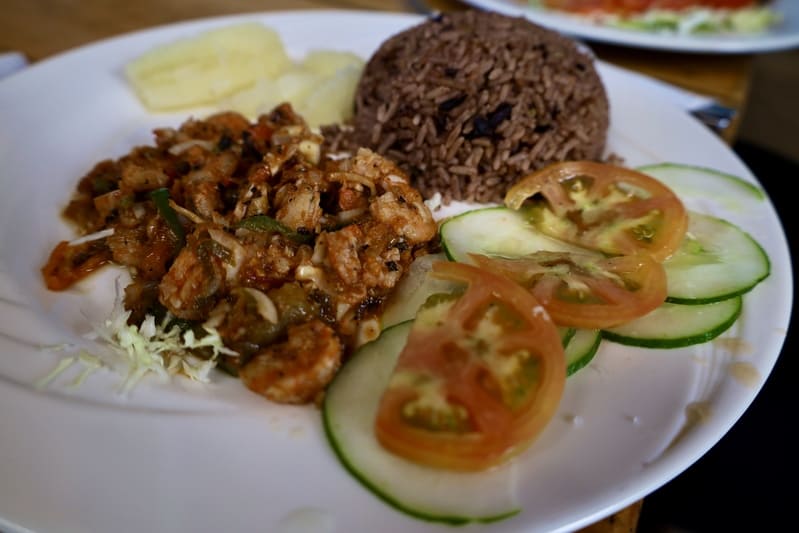
Cuban restaurants operate within the constraints of limited resources, and understanding the concept of rationing is crucial for you to gain insight into the daily realities of life on this historic island.
RELATED ARTICLE: Where to Find Authentic Aruban Food
El Cristo de la Habana
Head to the Christ of Havana (el Cristo de la Habana) for a breathtaking sunset experience.
This big statue of Jesus looks over Old Havana (Havana Vieja) and the water, creating a stunning view.

When I went, there were lots of people singing and dancing.
If you walk down a bit from the hill, there’s a truck selling coco frio (cold coconut water in a coconut) which is a refreshing treat.

Continue walking towards the water, and you’ll spot a ferry, the most budget-friendly way to return to Old Havana.
But, if figuring out a ferry isn’t your thing, or you’d rather not take a boat, you can also arrange a ride with a colectivo driver beforehand.
RELATED ARTICLE: Is Turks and Caicos Expensive?
Plaza Vieja
As you walk through Plaza Vieja in Old Havana (Habana Vieja), you can’t help but notice all the many restaurant options in this area for dinner.

For more food guidance, we have included over 30 restaurant recommendations in our “Explore Cuba Travel Guide” so you can find the perfect spot that suits your tastes.
After dinner, treat yourself to some delicious gelato from Pistacchio Havana.
Continue down to Avenida del Puerto for the final activity of the night.
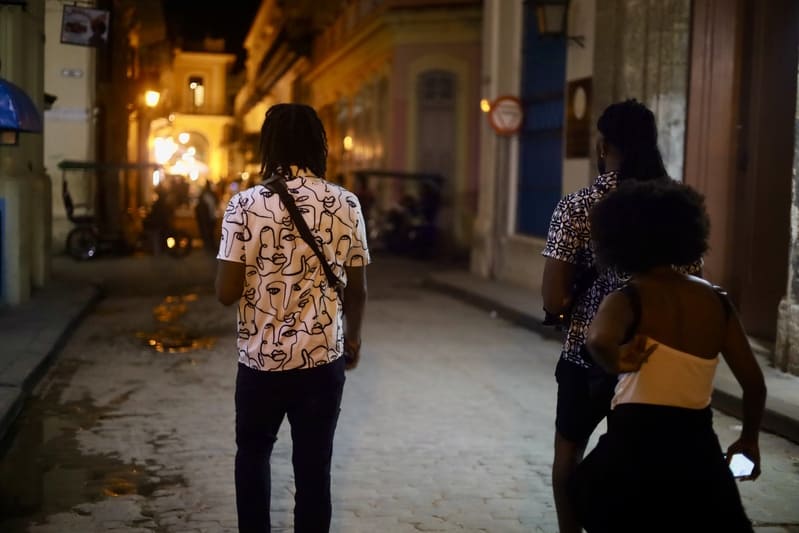
RELATED ARTICLE: How to Visit La Fortuna on a Budget
Havana Cannon Fire
Every night at 9 pm there is a cannon that fires off at Fortaleza de San Carlos de la Cabana (Fort of San Carlos of the Cabin) which is near el Cristo de la Habana.
You can get a view of this happening from across the water near the Malecon. It happens at 9 pm sharp.
Arrange your transportation ahead of time or head back towards the main plaza to get a colectivo back to your casa particular for the night.
DAY 2: Vinales Day Trip from Havana
Navigating Cuba as a tourist can be challenging, but experiencing the country from the perspective of a local adds a whole new dimension.
We had an exceptional day trip from Havana to Vinales with Alizandra who is a Cuban native with excellent English speaking skills.
She doesn’t hold back on lesser-known facts about life in Cuba, and she provides you with a better understanding of the Cuban way of life.
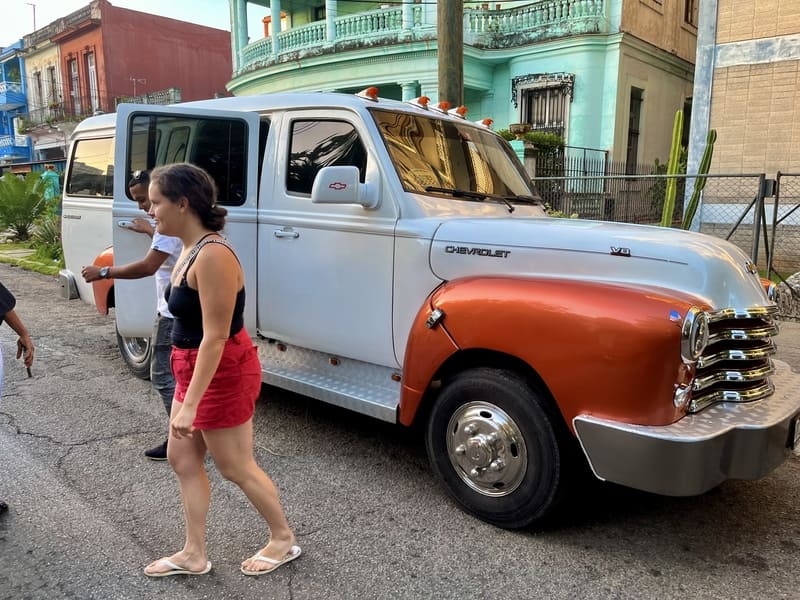
Alizandra not only coordinated our entire trip from Havana to Vinales, including transportation, entrance fees, and food recommendations, but she also became more than just a tour guide – a genuine friend.
Vinales is a UNESCO World Heritage Site and a must-visit during your 5 day trip to Cuba.
RELATED ARTICLE: 4 days in Puerto Rico: Lajas, Guanica, & Cabo Rojo
Cueva del Indio (Indio Cave)
Our day trip with Alizandra kicked off with a visit to the captivating Cueva del Indio after we stopped for breakfast.
Picture an amazing boat ride winding through ancient caves adorned with prehistoric drawings.
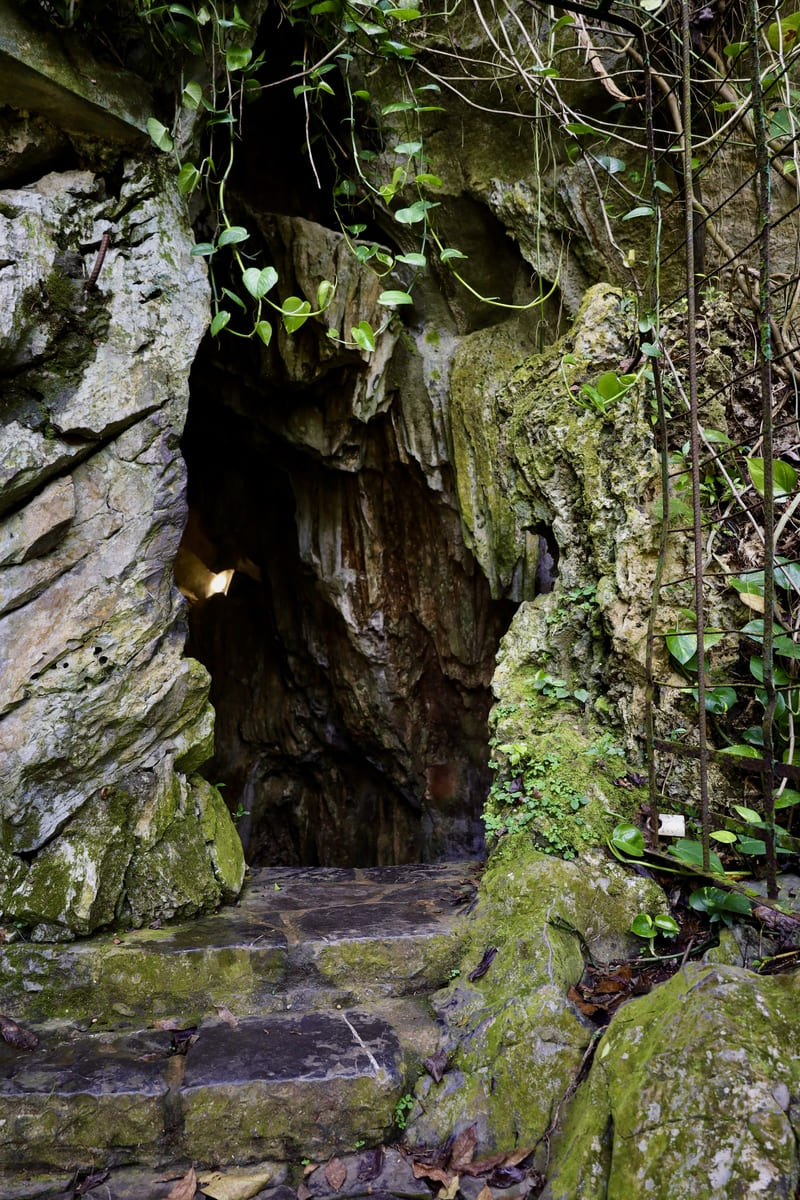
The boat guide flashes his light to make sure you don’t miss a single detail of those fascinating drawings on the cave walls.
It’s like stepping back in time as you cruise down the San Vicente River before heading toward the end of the cave and emerging from this incredible underground adventure.
Once you get off the boat, tables are set up with all sorts of souvenirs to check out. Don’t miss the chance to grab a refreshing cup of sugar cane juice before you head out, too.
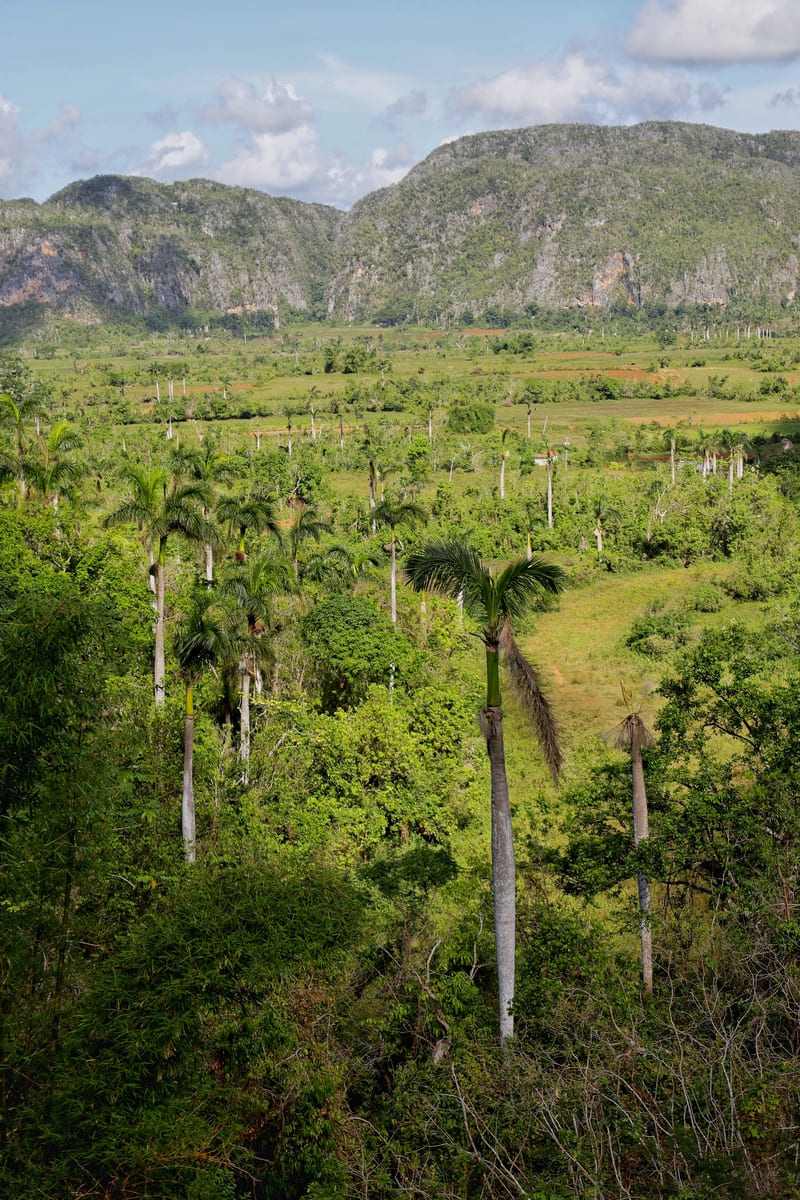
RELATED ARTICLE: Top Travel Mistakes to Avoid
Vinales Tobacco Farm
Now it’s time to explore the heart of Vinales with a visit to a local tobacco farm – a must during your 5 days in Cuba.
Get ready for a unique horse riding tour through the farm, soaking in the beautiful views.
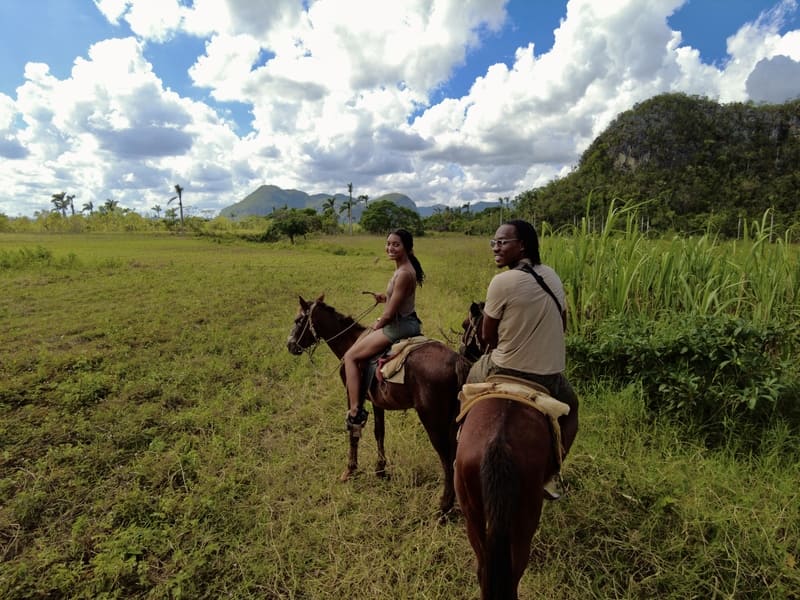
Whether or not you’re into horseback riding, you’ll learn all about how they grow tobacco and other crops at the farm.
The best part? You’ll learn the art of rolling Cuban cigars and picking up the tricks from the experts.
You’ll also hear all about the farm’s history and the stories behind these special tobacco leaves.
There is also an opportunity to purchase Cuban cigars directly from the locals here.
Just keep in mind that there are limitations to what you can bring back to the United States.
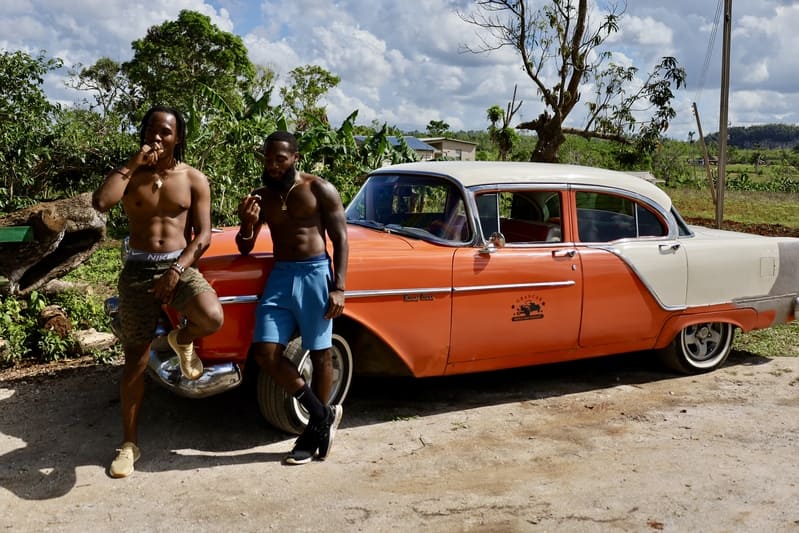
RELATED ARTICLE: Best Things to Do in Lajas Puerto Rico
Mural de la Prehistoria
El Mural de la Prehistoria (prehistory mural) is exactly as it sounds.
It is a massive mural depicting prehistoric times.
It was painted in 1960 on a towering mogote that reaches 160 meters and is a significant attraction in Vinales.
This vibrant mural illustrates dinosaurs co-existing with humans, and it is an awesome sight to see.
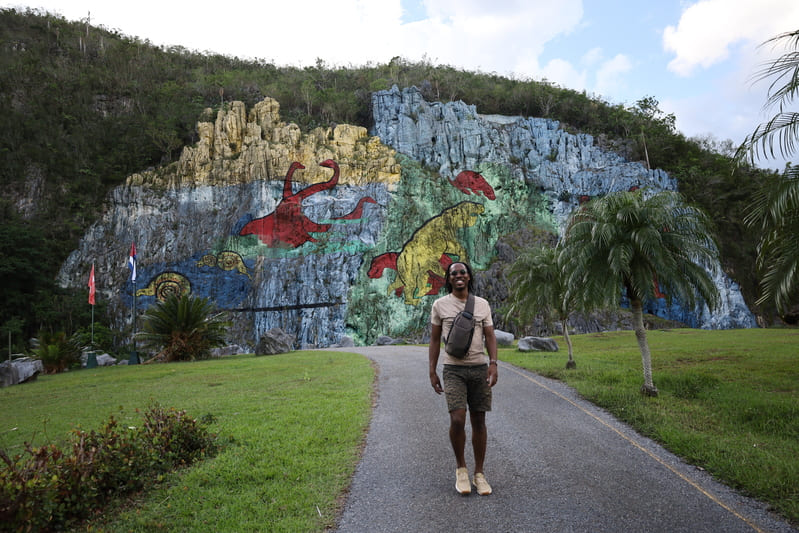
After taking pictures here, we went on to lunch at El Sabor Kirenia nearby and had an excellent family-style meal before heading back to Havana.
The journey back to Havana was filled with engaging and highly informative conversations with Alizandra.
Night in Havana
After a full day of exploring Vinales with Alizandra, you can grab a quick dinner in Old Havana before heading to your casa particular to rest up for tomorrow’s early adventure.
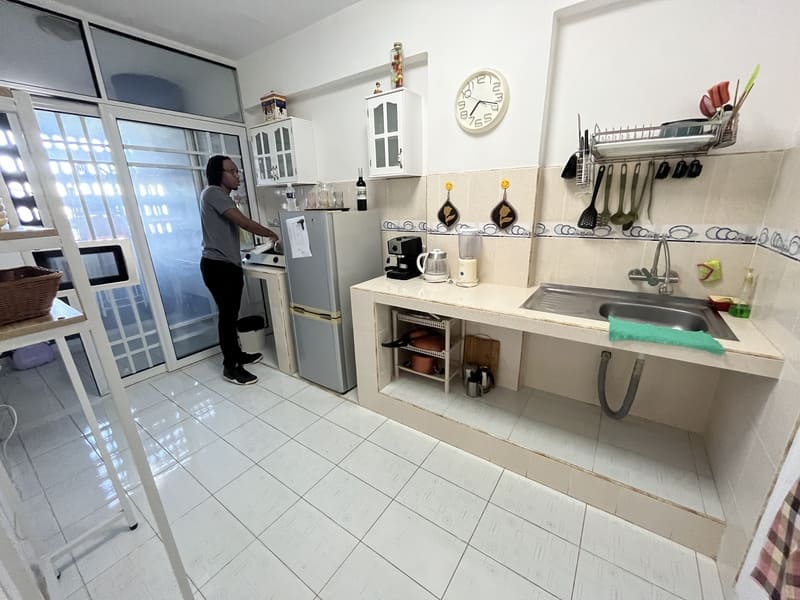
RELATED ARTICLE: Panama Trip Planning Tips
DAY 3: Havana to Trinidad Cuba
If you’re seeking a standout destination in Cuba, look no further than Trinidad.
It is one of the oldest cities in Cuba, and our personal favorite.
This Spanish colonial gem has charming cobblestone streets, picturesque beaches, vibrant buildings, and tucked-away waterfalls.
Recognized as a World Heritage Site since 1988, Trinidad’s historical significance in the sugar trade adds to its allure and makes it a destination rich in both beauty and heritage.
RELATED ARTICLE: Best Cabo San Lucas Beaches
How to Get to Trinidad from Havana
Start your day early for the journey to Trinidad from Havana.
We had it all sorted with a colectivo arranged to take us.
We set out in the morning and smoothly reached Trinidad five and a half hours later in the afternoon.
While the ride might sound like a lot, it turned out to be the best opportunity to bond with our group.
We went to Cuba with @whereisbree, @barringtonodyssey , @flyingphirstklass , and @trini_dondada.

Even though we were already acquainted as creators from Instagram, our first in-person meeting was on this trip!
The extended journey from Havana to Trinidad turned out to be the perfect setting for authentic friendships to grow.
Chew Tip: Group travel not only fosters friendships but also allows for cost-sharing—an added perk to enhance your experience. #SeeTheWorldSaveADollar
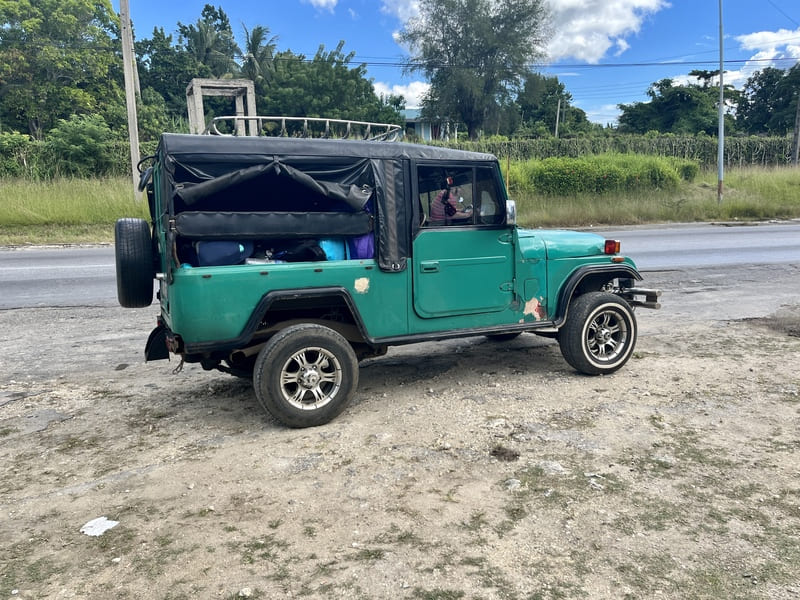
For those planning their own venture from Havana to Trinidad, our “Explore Cuba Travel Guide” offers essential insights into bus costs, routes, and schedules, providing practical information for a seamless road trip.
The guide also features contact information for our personal drivers, ensuring you have the necessary tools for a memorable and well-organized adventure.
Trinidad Casa Particular
In Trinidad, you can find comfortable and spacious choices for casa particulares.
Our 3-bedroom stay even served breakfast in the morning.
Once you check in, drop off your things, and freshen up a bit, it’s time to step out, grab a bite to eat, and explore the surroundings.
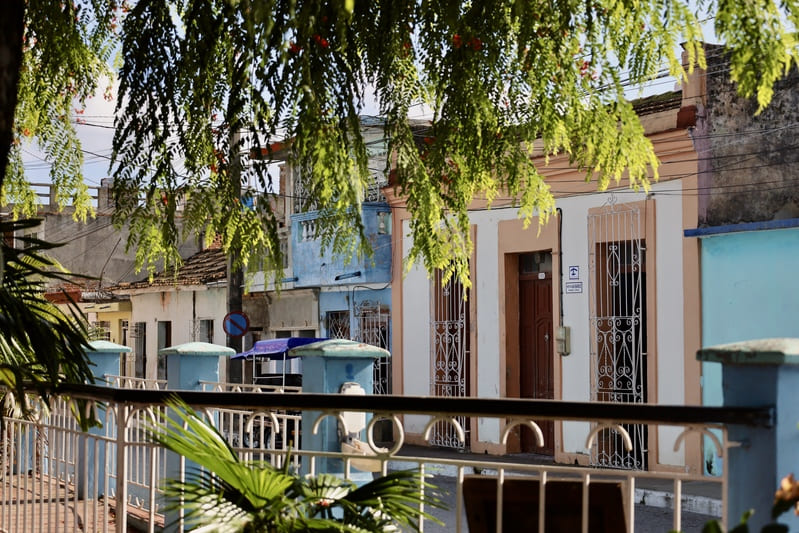
Playa Ancon
Playa Ancon, or Ancon Beach, stands out as one of the most beautiful beaches in Trinidad, Cuba.
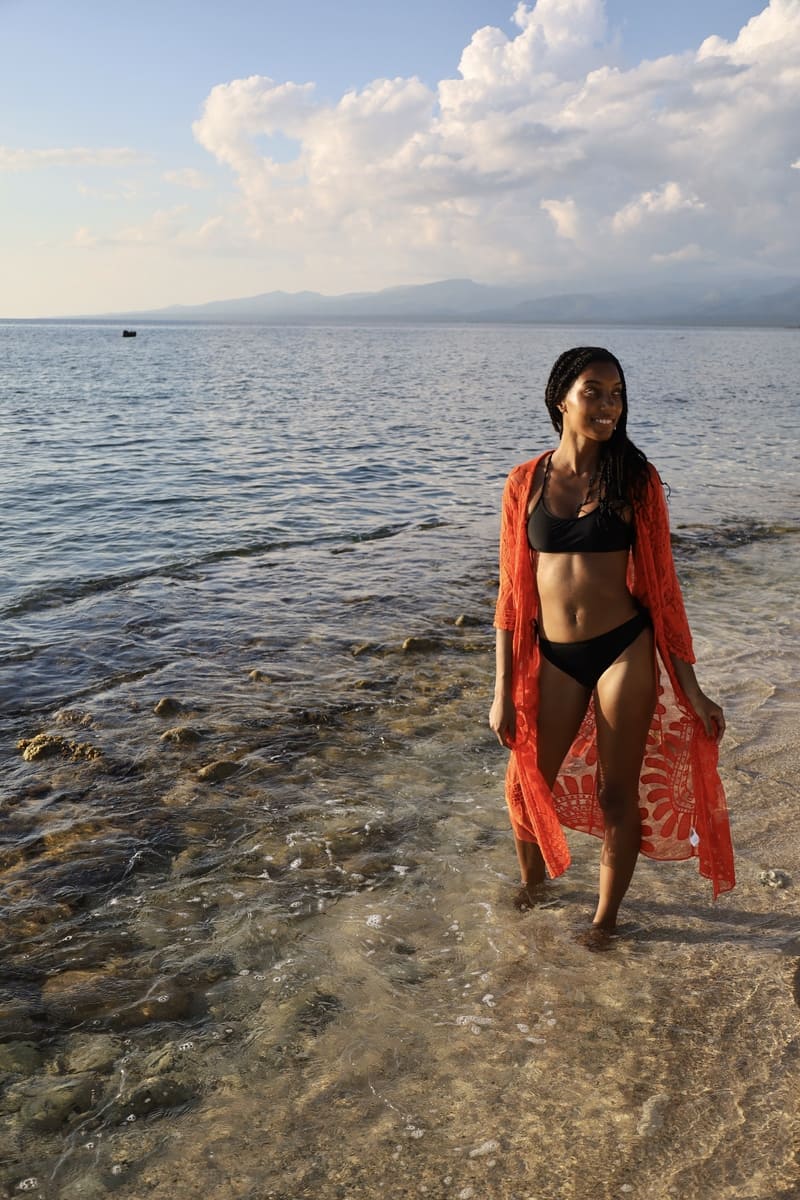
When it comes to getting to Playa Ancon, mastering a bit of Spanish can be a game-changer, especially when negotiating a colectivo.
Having a grasp of the language not only adds to the richness of your Cuban experience but also opens doors to more affordable transportation options.
Colectivos are a popular means of travel in Cuba, and being able to communicate in Spanish puts you in a favorable position during negotiations.
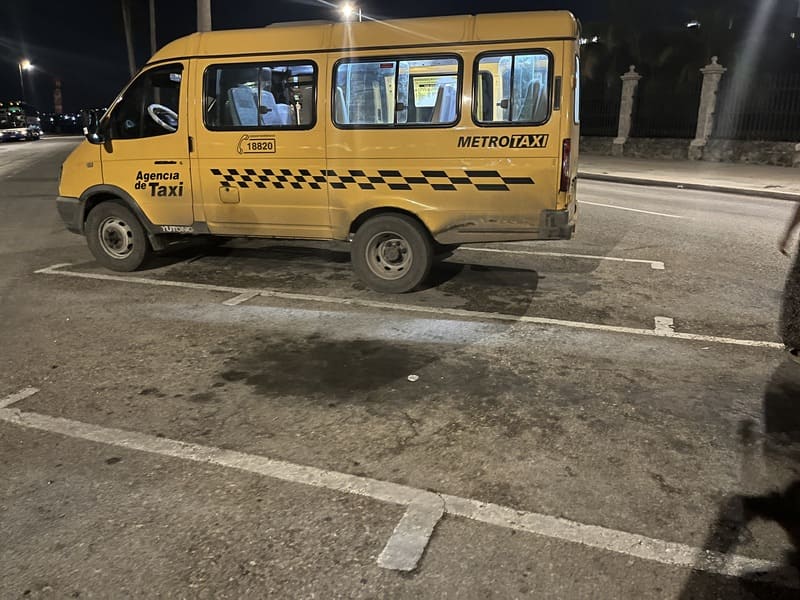
Locals appreciate the effort to speak their language, and it often leads to a friendlier exchange.
By investing in learning some key Spanish phrases, you not only enhance your travel experience but also empower yourself to navigate the local transportation system more efficiently.
Once you arrive at Ancon Beach, enjoy the calming waves and unwind on this beautiful beach.
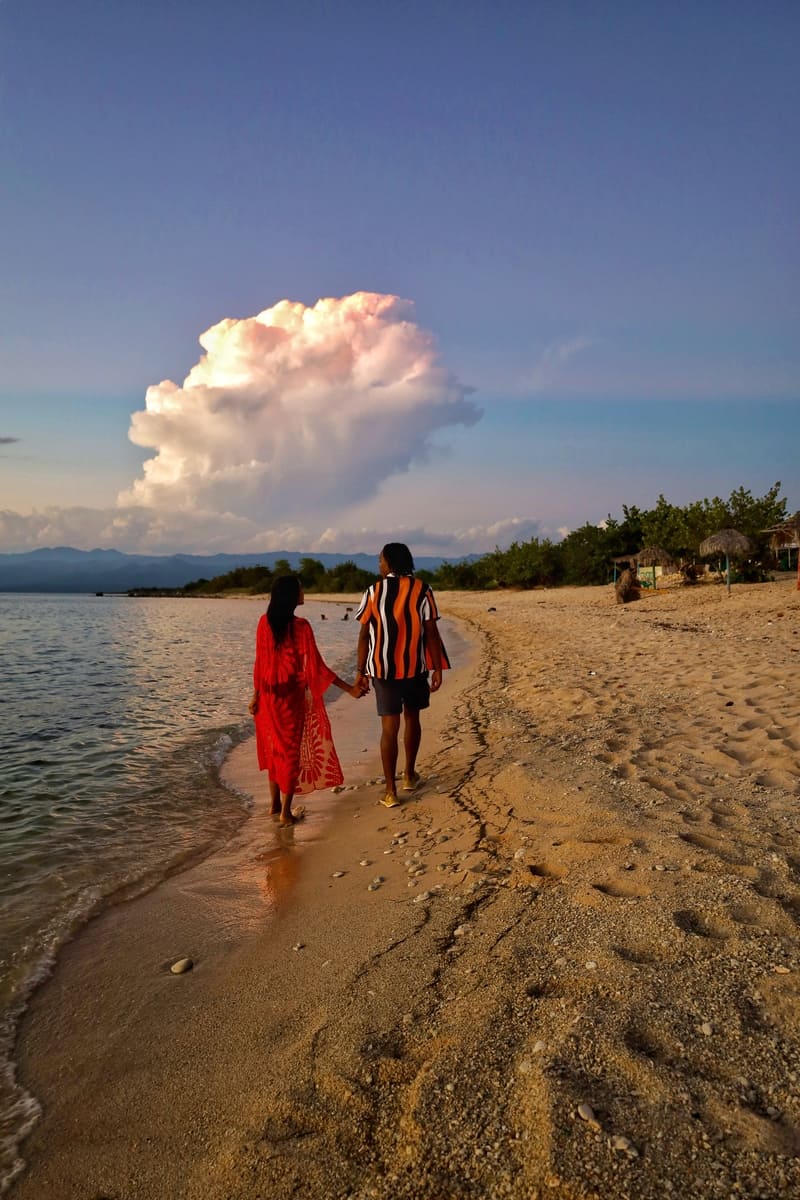
Catch the sunset, and take it easy before heading out for dinner in Trinidad.
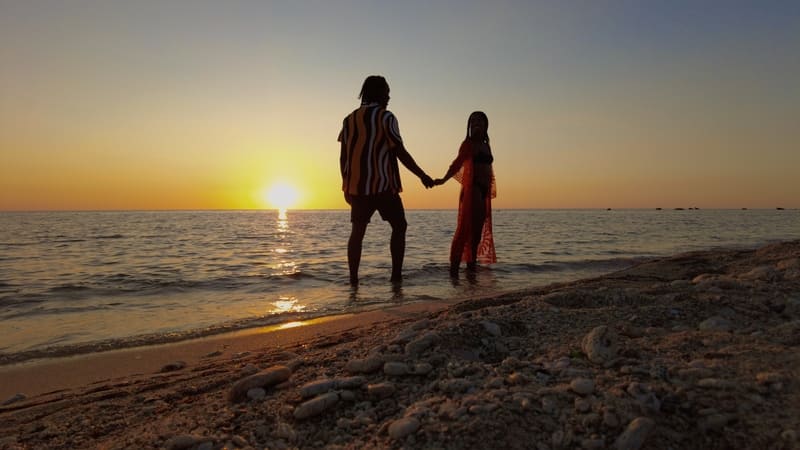
RELATED ARTICLE: Cheapest Time to Travel to the Caribbean
Trinidad Cuba Nightlife
As the sun sets, the night is barely just beginning in Trinidad. Get yourself to Casa de la Musica for a round of salsa dancing to live music.
And yes, you should definitely jump in!
Afterward, make your way to Disco Ayala, a cool nightclub tucked inside a cave.
It’s a one-of-a-kind experience with a mix of energetic locals and fellow travelers.
Enjoy the moment before heading back to your casa particular for a cozy night’s rest.
DAY 4: Trinidad, Cuba
We started our morning with a delicious breakfast at our casa particular in Trinidad.
You’ll want to eat well because you’re in for an adventure today.
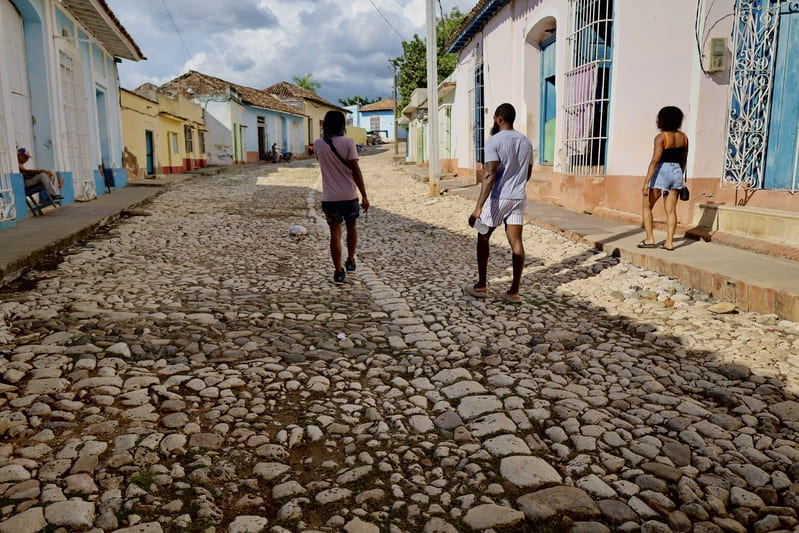
Javira Waterfall
Hop in a colectivo to El Cubano Natural Park – the starting point for your hike to Javira Point Waterfall.
The trail is pretty straightforward but includes a river crossing.
But here is where it gets interesting with money. We had exchanged a lot of USD for Cuban pesos, ready to pay at the park entrance.
Surprisingly, they wouldn’t accept their own currency. With American credit cards not working in Cuba, we faced a dilemma.
Luckily, a European tour group arrived at the same time, and they kindly used their credit cards for our entrance fee, and we reimbursed them in Cuban pesos.
Quick tip: if you’re American, bring USD to Javira Waterfall.
The waterfall is incredible and worth the easy 1.5-mile (2.5 km) hike.
RELATED ARTICLE: Ultimate Guide to Pulhapanzak Waterfall
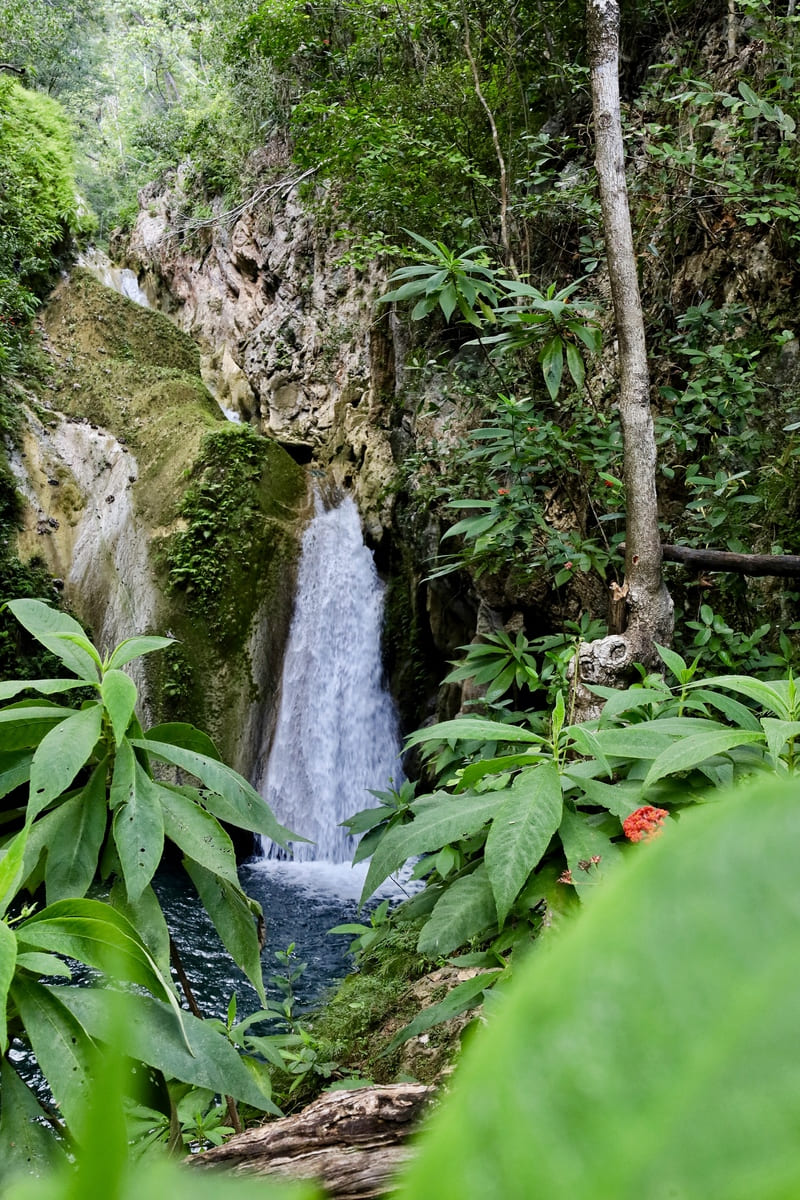
The water is refreshingly cold for a swim, and there’s a cool spot at the top of the hill to jump into the water.
While my husband and friends explored deep into the cave, I preferred recording the adventure since cliff-jumping wasn’t my thing.
They provide life jackets on-site which is great because the water gets deeper near the waterfall.
I can swim, but it’s always nice to chill with a life jacket.
The 45-minute walk back dries you off quickly, thanks to the hot Trinidad weather.
After the waterfall experience, arrange for your colectivo driver to take you to a nearby spot for some food.
RELATED ARTICLE: Everything to Know About San Ramon Waterfall
Playa Maria Aguilar
Discover another beautiful beach to unwind and soak in the peaceful views at Maria Aguilar Beach (Playa Maria Aguilar).
There’s a bar where you can grab some drinks here, as well.
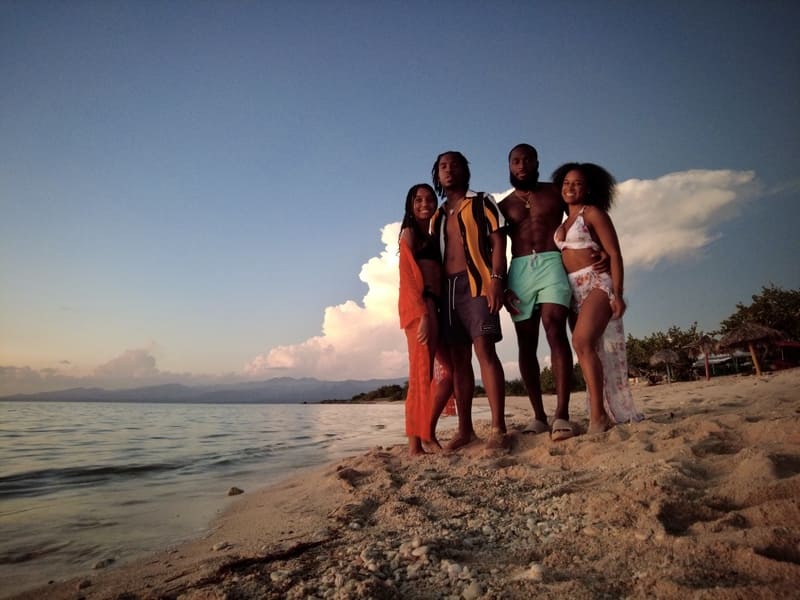
RELATED ARTICLE: Ultimate Things to Do in Paracas
Plaza Mayor
Post-beach relaxation, we went back to our casa particular to freshen up, then made our way to the heart of Trinidad – Plaza Mayor.
Our quest for a delicious dinner led us to the rooftop restaurant, Bistro Trinidad where we had traditional daiquiris and mojitos.
Afterward, we swung by La Canchanchara to try out another traditional drink – la canchanchara which is a combination of rum, lime, and honey.
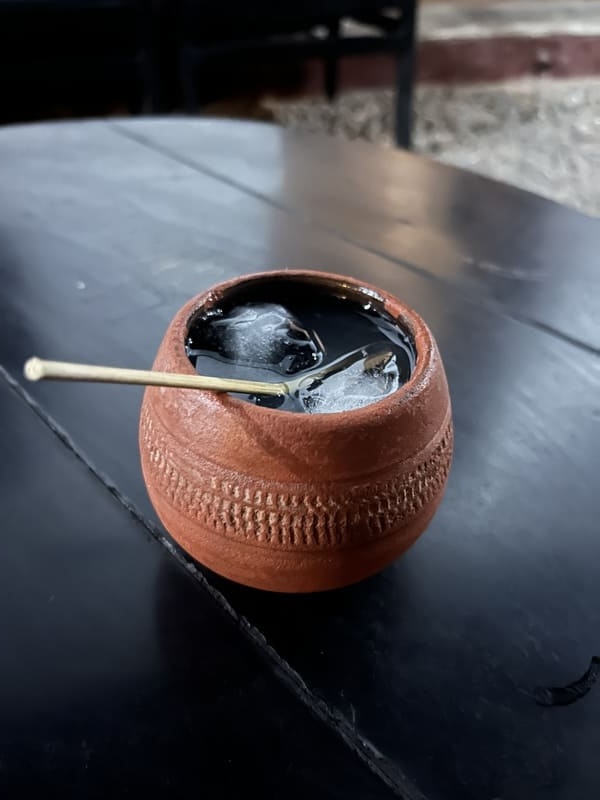
We strolled through the charming streets around Plaza Mayor before wrapping up the night at our casa particular.
RELATED ARTICLE: Free Things to Do in Peru
DAY 5: Trinidad to Havana
This morning marked our last breakfast at the Trinidad casa particular, and we couldn’t resist grabbing some delicious fish sandwiches from the stand around the corner for the road.
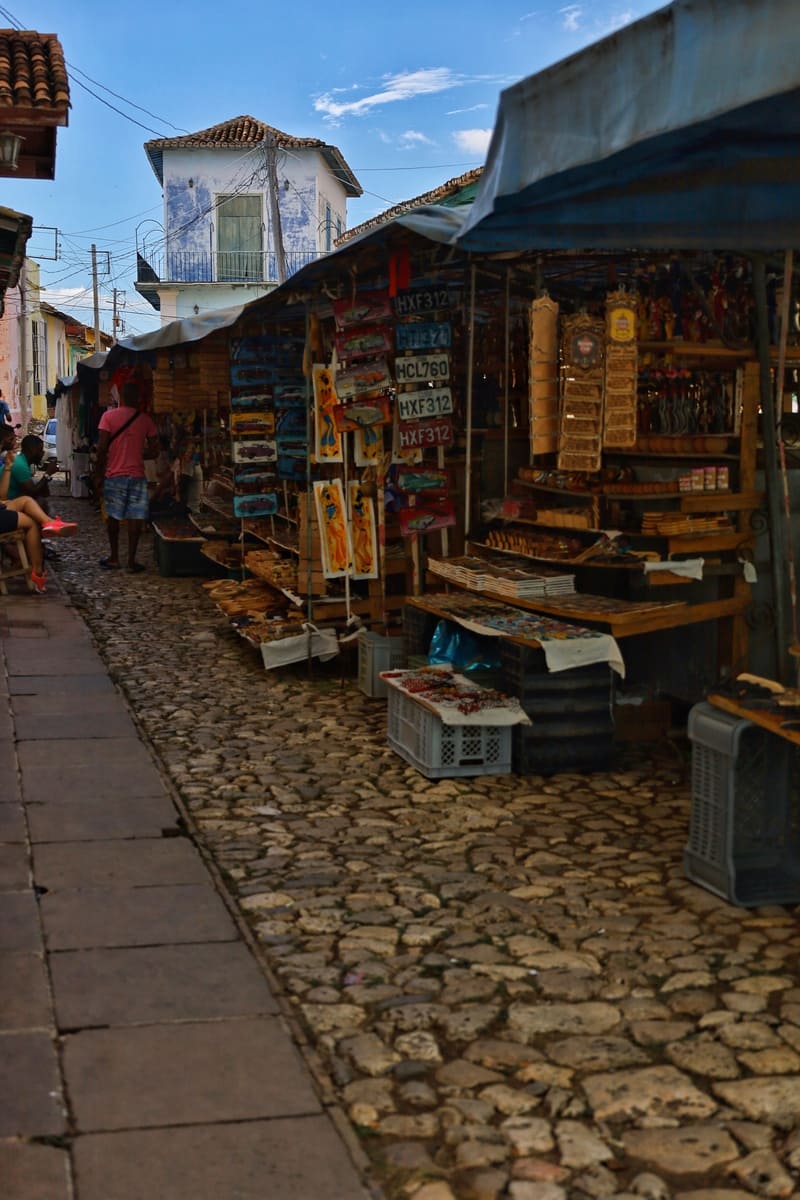
With an early start, we headed on another 5.5-hour road trip back to Havana from Trinidad – granting us plenty of time for more close bonding along the way.
Havana
We walked around the National Capitol, resembling the US Capitol building.
Lunch led us to El Dandy, a quaint spot. Just be sure to check what’s available before diving into the menu.
Just up from El Dandy, we stumbled upon a basketball court.
My husband took it back to his college basketball days and joined in a game with the locals.
Across from the court was Pistacchio Havana Gelato, so another round of gelato was a must before a leisurely walk to Callejon de Hamel.
This street features a narrow alley in Havana adorned with vibrant murals and sculptures crafted from bathtubs, hand pumps, and pinwheels.
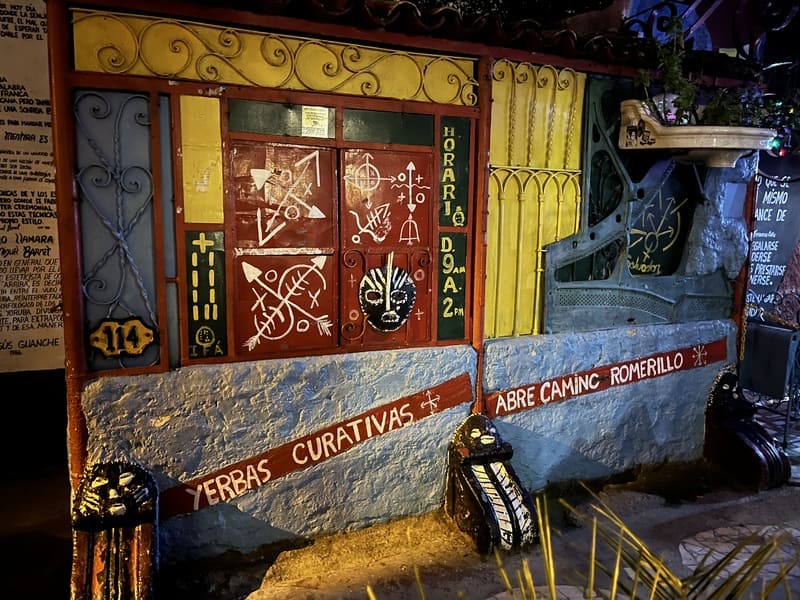
It provides a glimpse into the local art scene of Cuba’s capital.
It’s incredible to see renowned Cuban artist Salvador Gonzalez Escalona’s abstract Afro-Cuban artistic style.
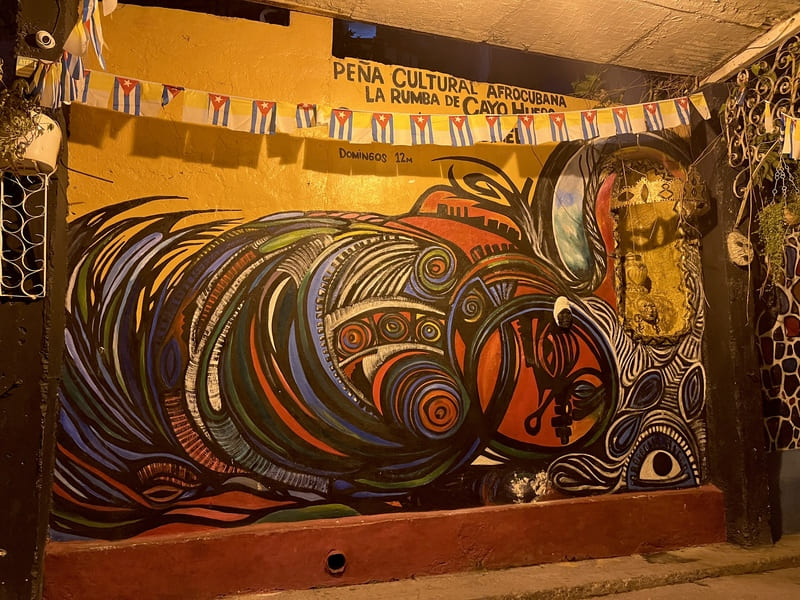
Afterward, we made our way back to our Havana casa particular to make sure we were fully packed and ready for a very early morning departure to the airport.
RELATED ARTICLE: What to Do in Huacachina
Tips for 5 Days in Cuba
- Entry – Make sure you have a valid passport, complete the required health screening forms, and apply for your tourist visa in advance or at the airport before you board your flight.
- Documents – Keep screenshots of important documents including health forms, and the address of your casa particular.
- Internet Access – Purchase a Wifi card for internet access in designated areas. Be prepared for a more unplugged experience in Cuba since you may not always be in a Wifi zone. Be sure to download offline Google Maps before getting to Cuba so you can more easily navigate the country.
- VPN – Many websites (including Airbnb) are blocked in Cuba. If you use a VPN you can gain access to different restricted websites and apps. Just be sure to download the VPN prior to getting to Cuba, and the VPN works as long as you are connected to Wifi.
- Transportation – Colectivos (shared taxis) and Viazul buses are popular modes of transportation. Confirm the price of your colectivo with the driver before getting into one. Plan your routes and book in advance, especially for longer journeys. Check our “Explore Cuba Travel Guide” for colectivo drivers and info on the bus systems. Keep in mind that Americans can’t rent cars in Cuba.
- Accommodation – Book your casa particular in advance for an authentic Cuban experience. If you’re an American traveling to Cuba on a support for the Cuban people visa, technically you are required to stay in a casa particular. We have over 30 recommended casa particulares included in our “Explore Cuba Travel Guide.”
- Food – Set realistic expectations for food. While you can find good places to eat, keep in mind that the availability of options may be limited due to food rations in Cuba. It’s a good idea to ask the available choices before getting too excited about the menu.
- Currency – Be aware that American credit cards and American bank cards are never accepted. While Cuban pesos are the local currency, there’s a preference for euros for USD. It’s advisable to bring sufficient cash for your entire trip since accessing ATMs will not be an option for withdrawals if you are American.
- Medication – Leveraging my experience as a pharmacist, I’d highly recommend packing enough of your prescribed medications and any over-the-counter (OTC) meds you might need. Keep them in their original containers, and bring enough to account for any travel delays. This way, you’ll be well-prepared for any unexpected situations, especially considering the limited availability of medications in Cuba.
- Cultural Respect – Embrace the rich cultural diversity in Cuba, which is likely different than what you are used to. Instead of passing judgment, take the time to understand and appreciate local ways of life. Keep an open mindset and always show respect as you explore.
RELATED ARTICLE: What Not to Miss in Peru
5 Days in Cuba FAQs
Can you go to Cuba for 5 days?
Yes, you can go to Cuba for 5 days, especially if you want to explore one city. Be sure you have the required visa or tourist card.
How many days is ideal for Cuba?
The ideal duration for a Cuba trip depends on your preference. Many find 6-10 days sufficient for a well-rounded experience.
How much money should I bring to Cuba for 5 days?
Budgets vary, but bringing $100 USD per day is a reasonable estimate for accommodation, meals, and activities.
Is it safe to go to Cuba right now?
Cuba is safe for tourists, with a low crime rate and strict regulations on weapons and drugs. We felt secure throughout our 6-day trip.
Explore Cuba Travel Guide
We have carefully curated a wealth of itinerary ideas tailored to major destinations throughout Havana, Trinidad, Vinales and Varadero in our comprehensive 31-page “Explore Cuba Travel Guide.”
Dive into over 80 insightful suggestions covering everything from must-visit attractions to hidden gems.
What sets our guide apart is its thoughtful organization by budget, empowering you to make the most of your journey while keeping your wallet happy.
See the World and Save a Dollar with the valuable insights and practical tips found in our “Explore Cuba Travel Guide.”
Your Cuban experience is about to get even more extraordinary!
Found this article helpful? Share it!

